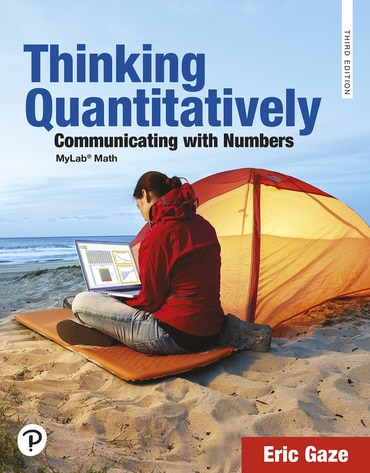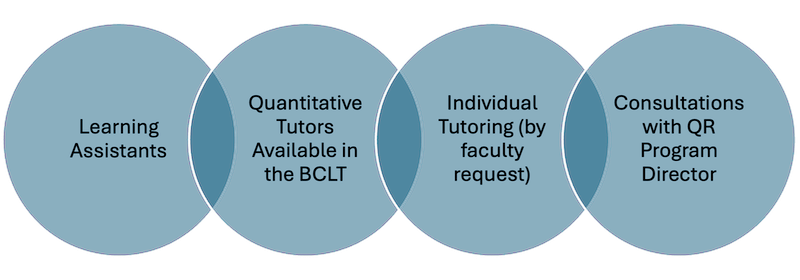Quantitative Reasoning Resources
Support for students includes:
- Learning Assistants provide peer-to-peer academic support for specific courses.
- Quantitative Tutors, available in the BCLT, provide one-on-one tutoring in Biology, Chemistry, Economics, Mathematics, Statistics, and Computer Science courses.
- Individual Tutoring (by faculty request)
- Consultations with QR Program Director
Dedicated QR Courses
- MATH 1050: Quantitative Reasoning (QR)
- PHYS 1093: Introduction to QR in the Physical Sciences
- CHEM 1091: Introductory Chemistry and QR
- ECON 1050: Principles of Microeconomics and QR
- BIOL 1060: Prove It! The Power of Data to Address Questions You Care About
- DCS 1209/ECON 1099: Using Big Data to Investigate and Suggest Solutions to Economic and Social Problems
- DCS 1500: Understanding and Deploying Computational Methods
- MATH 1200: Introduction to Data Visualization
- MATH 1300: Introduction to Statistics and Computation
- GOV 2080: Quantitative Analysis in Political Science

- emphasizes working with data and Excel which is invaluable for all quantitative social science work as well as biology and chemistry.
- focuses on statistical literacy laying the groundwork for any of the myriad statistics courses on campus.
- introduces linear, exponential and logarithm functions; using modeling along with graphical interpretations that include log scales preparing students for calculus and introductory natural science courses.
- extensive coverage of proportional reasoning (ratios, rates, percentages) required for effective communication with numbers, including the dimensional analysis and conversions required for chemistry.
- using Excel and working with data. CXD has identified MATH 1050 as one of the few courses on campus that provides students with invaluable career readiness skills.
For more information see the Thinking Quantitatively Blog.
Foundational support for QR available at the Khan Academy.
QR (also called quantitative literacy (QL))
Defined as the ability to process quantitative information and the capacity to critique, reflect upon, and apply such information in making arguments and informed decisions.
Also called numeracy, which is a well-established and highly studied construct, numeracy encompasses not just mathematical ability but also a disposition to engage quantitative information in a reflective and systematic way and use it to support valid inferences[1].
Students should have multiple opportunities to:
- Learn the tools and frameworks of quantitative analysis, what do the numbers say? Engage in a productive, academic approach to understand and argue points of view
- Learn to learn from numerical information and to practice skepticism, recognize that numbers are not neutral
- Learn confidence and agency to take a stance on issues—overcome powerlessness, helplessness in the face of the numerical or statistical arguments of others
- Learn to use numerical or statistical information ethically as they develop their expertise
- Learn how to find and steward trusted resources of numerical/statistical information; recognize ideological points of view, stances, and agendas
[1] Peters, E., Västfjäll, D., Slovic, P., Mertz, C.K., Mazzocco, K. & Dickert, S. Numeracy and Decision Making. Psychological Science 17, 407-413 (2006).
